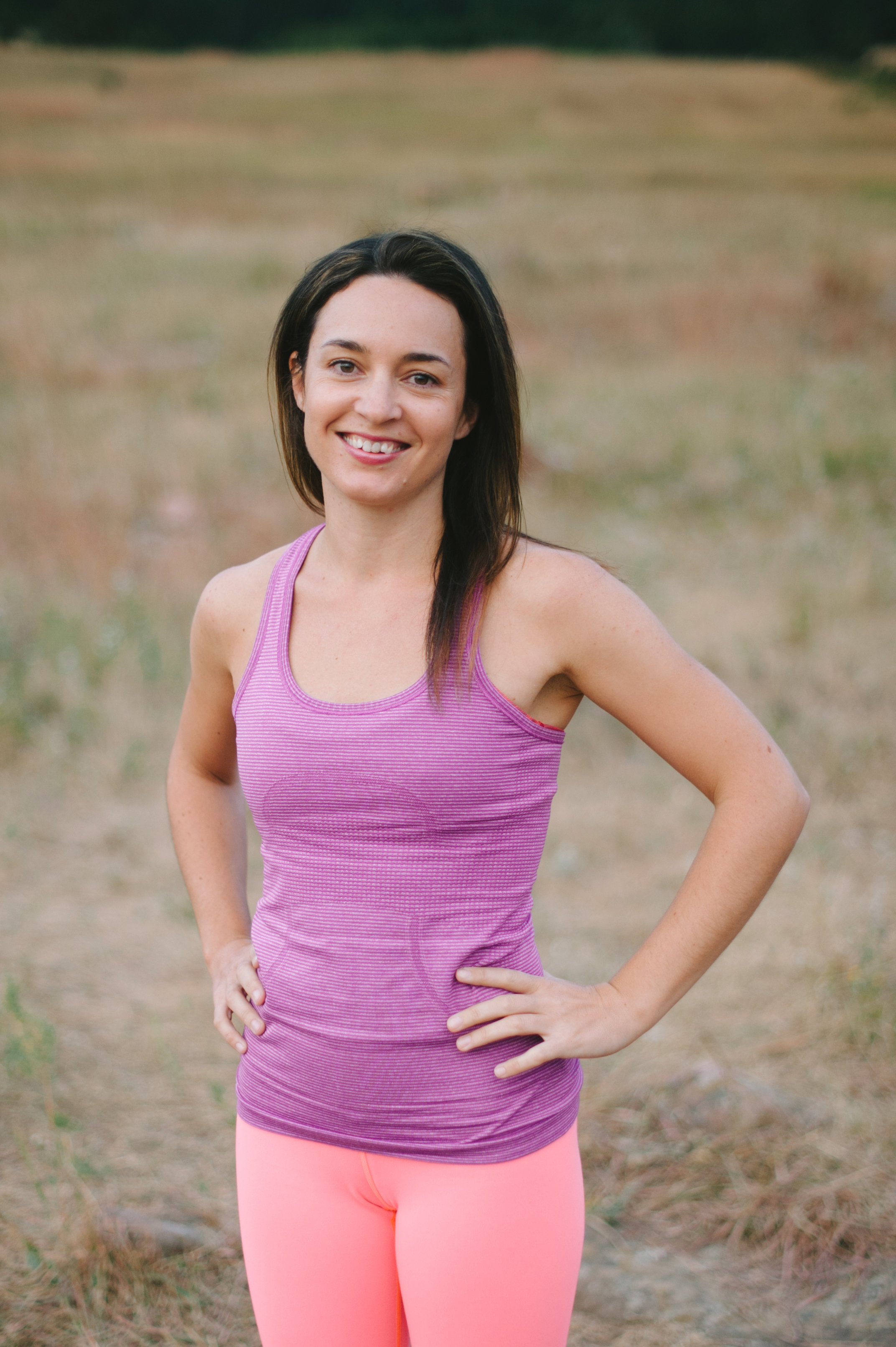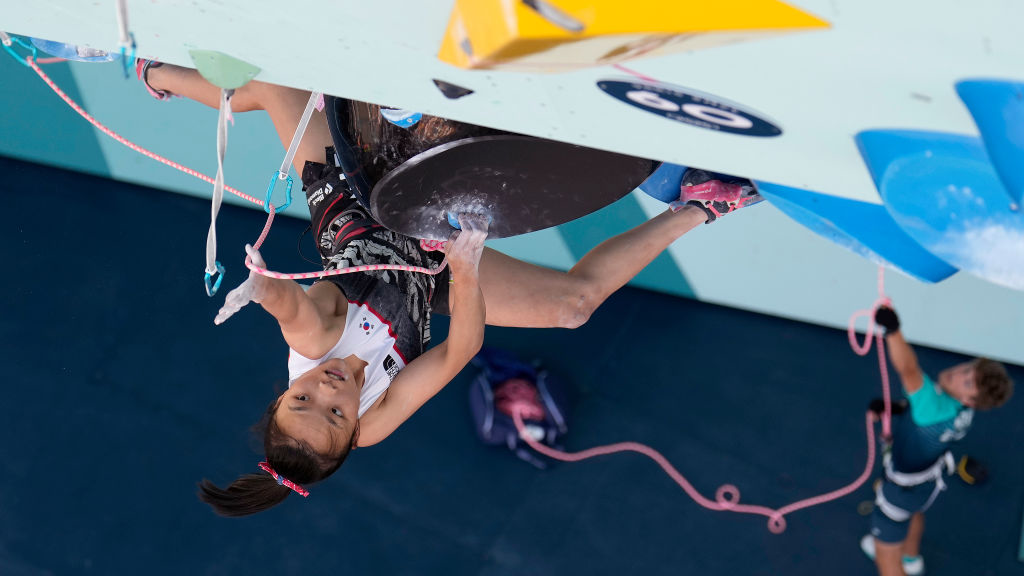I went on a yoga and hiking retreat in the Swiss Alps – these are 5 ways I think all hikers can benefit from slowing down and moving mindfully
What I learned from a mindful weekend in the mountains
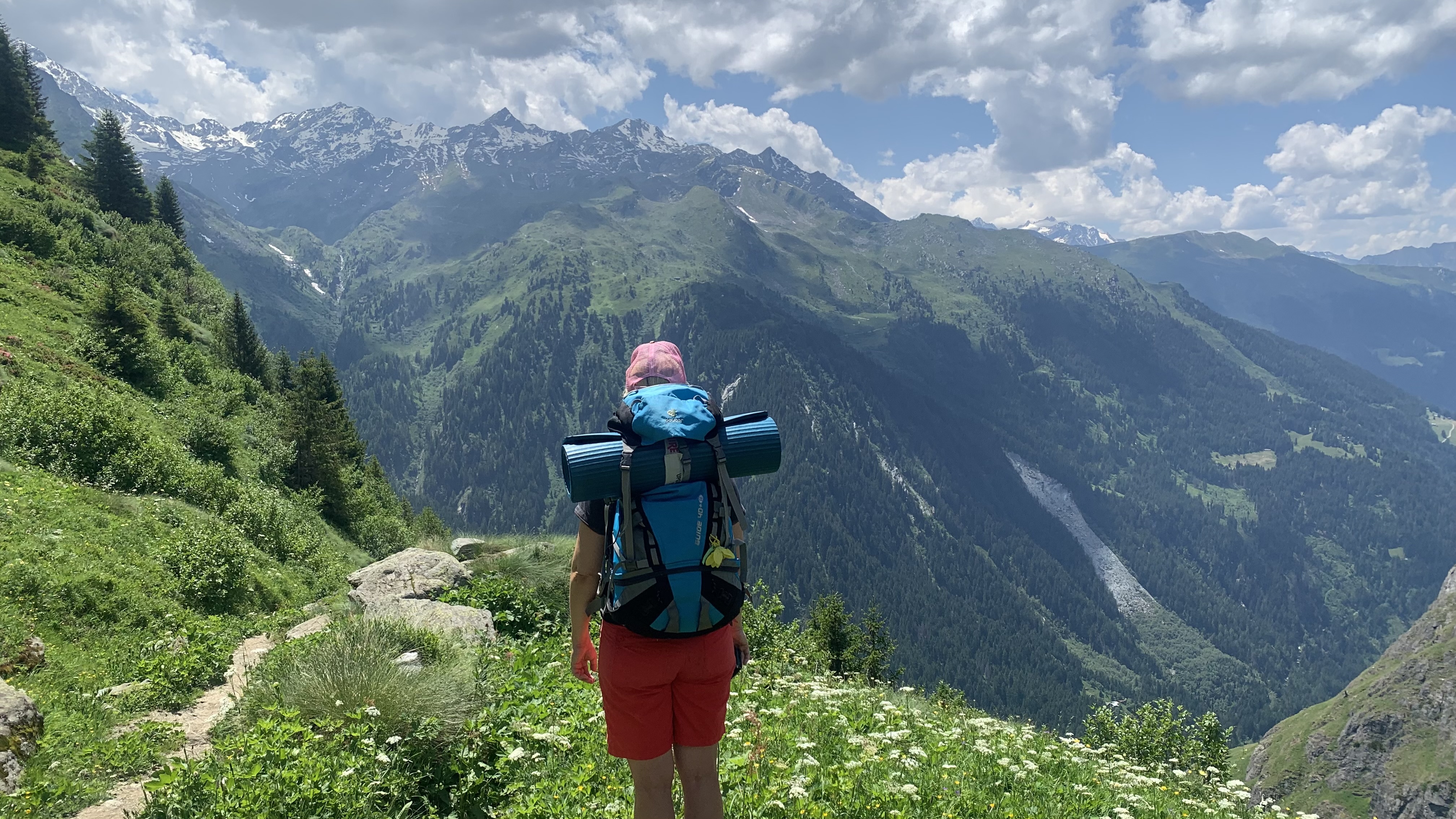
It’s an unusually hot June day as we climb at a leisurely pace from Fionnay up to Cabane de Louvie. At less than 2.5 miles (4km), the hike is short, but it’s steep, with an elevation gain of nearly 3,000ft (700m). But none of that is the real reason for our languid approach.
I’m here in Switzerland’s Val de Bagnes for a Mindful Weekend with 10 strangers, guided by yoga teacher Amélie Bertschy. We’re wearing our best hiking boots and our packs are filled with hiking essentials like waterproof jackets and headlamps, but unlike a typical group hike, we’re not here to charge up the mountain.
The brochure promises immersion in nature, wellbeing, and mindful movement. The part which piques my curiosity most is that the trip is described as the 'ultimate digital detox', something that’s grown harder to come by even in these alpine huts, once notable for their soul-stirring silence, that have given in to public demand for WiFi. These days, the chirp of the local alpine chough increasingly gets drowned out by the bing of an incoming text message, even miles from the nearest village.
But Cabane de Louvie has held strong on this front, and even though we happily snap photos with our smartphones and compare distances on our GPS watches, when we arrive at the serene cabin after a dip in the lake outside, we’re greeted by a sign that reads 'No WiFi here, connect with each other instead'.
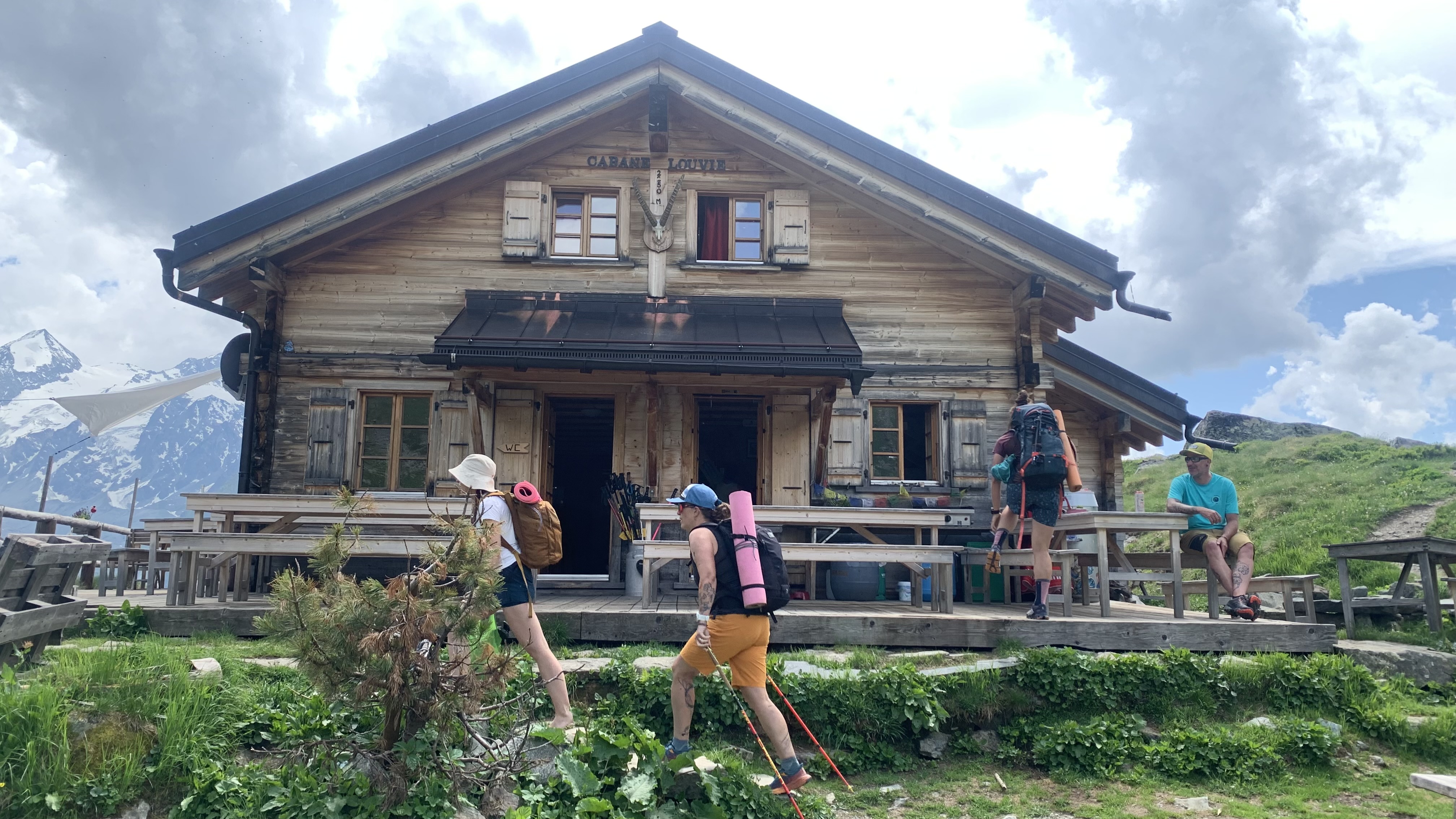
On the hike up, Bertschy, who has an impressive portfolio as a sports scientist, physiotherapist and accomplished mountain runner, in addition to teaching yoga, explains that this is just one reason why Cabane de Louvie makes the perfect setting for a mindful retreat.
“It’s different from the other cabins because it has no reason to be here,” she says of the picturesque hut perched at 7,380ft (2,250m) high, in a nature reserve.
Other huts in the area serve weary travelers on their way to and from summiting mountains – Cabane Mont Fort down the valley in Verbier historically lodged trekkers on the Haute Route from Chamonix to Zermatt, for example – but a visit to Cabane de Louvie is the whole point in itself.
All the latest inspiration, tips and guides to help you plan your next Advnture!
“It’s about enjoying the mountains and just being there and being in contemplation,” explains Bertschy.
As such, we discover the patio outside the deck is festooned with couches where guests can recline and scan the surrounding mountains for glimpses of wildlife. The owners have constructed a small yoga deck just behind the cabin, where we meet for an evening flow as the sun sets, and again at sunrise, thrilled when an ibex nonchalantly strolls past. Though our fondue supper is lively, with the cabin at full capacity for the night, the lights here automatically go out at 10pm to encourage guests to rest.
Getting there: Fly to Geneva then train to Le Chable (change in Martigny), bus to Fionnay using the VIP Pass
Nightly rate: 72CHF ($90 / £65) includes dinner, breakfast and one shower token.
Accommodations: Mixed dormitories with traditional sleeping style ranging from 4 to 17 people, communal shower rooms and toilets
Availability: Typically open May to September
Website: https://en.louvie.ch/
More information: www.travelswitzerland.com
We take a longer route out the next day, climbing another 1,300ft (400m) up from the cabin before traversing the mountain to Verbier ski resort where we cool off with a cold drink before riding the gondola down and heading back to our regular lives.
In total, the experience lasts just over 30 hours – in normal life, enough time for me to work, eat, sleep, and work some more – but it has a great impact in a short time, and has led me to change the way I want to spend time in the mountains. There are the obvious benefits, like improved mobility and the therapeutic impact of stretching our tired muscles, but the real gains are subtler and more profound.
Read on for five ways I think slowing down and moving mindfully can benefit all hikers.
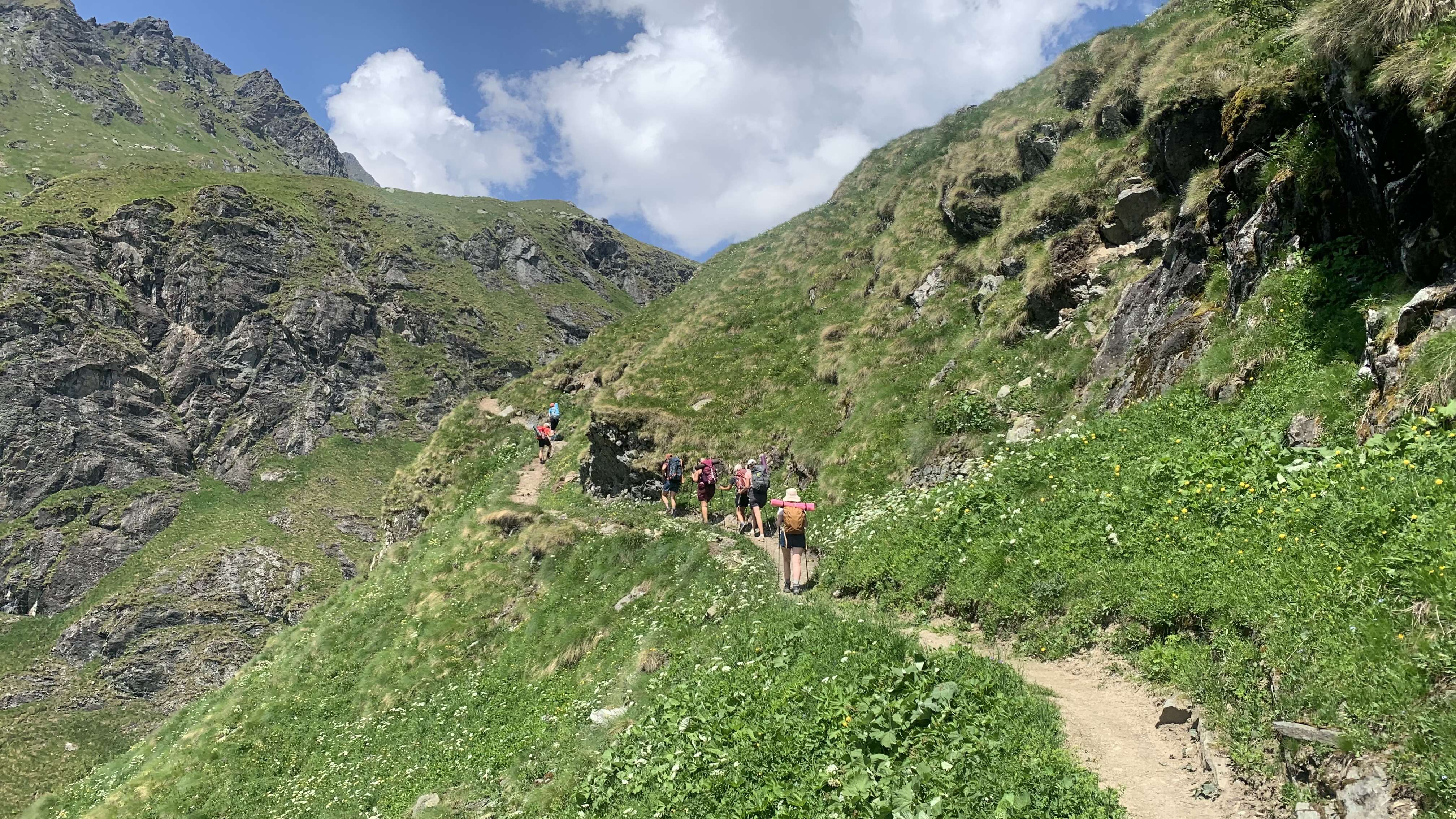
Presence
Before setting off from Fionnay, Bertschy gathers us together and makes a suggestion for our approach:
“Every so often, stop talking to each other and ask yourself: what do I hear? What do I smell? What do I see?”
It’s a simple but effective prompt that helps me connect more to my surroundings through my senses. I spot wildflowers I can’t name and patches of snow clinging to the distant peaks despite the heat. I breathe in the scent of edelweiss and spruce, and hear the melodious song of a whinchat from the trees, then the shrill chirp of a marmot as we climb higher.
We’re also encouraged to go slowly, with Bertschy setting the pace at the front of the group. And I mean really slowly. My Suunto Run watch informs me that the whole journey to the cabin takes nearly four hours, including our long stop for lunch, meaning we hiked at an average pace of just over half a mile (1km) per hour. Unlike my usual fast march, my heart rate stays low, and I find the walking easy, pleasurable. On our second, longer day, I don’t fall foul to fatigue, which all too often can result in poor decision making among hikers.
The result isn’t frustration or annoyance, as I might have predicted. Instead, I’m able to soak in my surroundings more fully, whereas on an ordinary hike I might get distracted by conversation or lose sight of my surroundings as I put my head down and muscle my way up a steep slope.
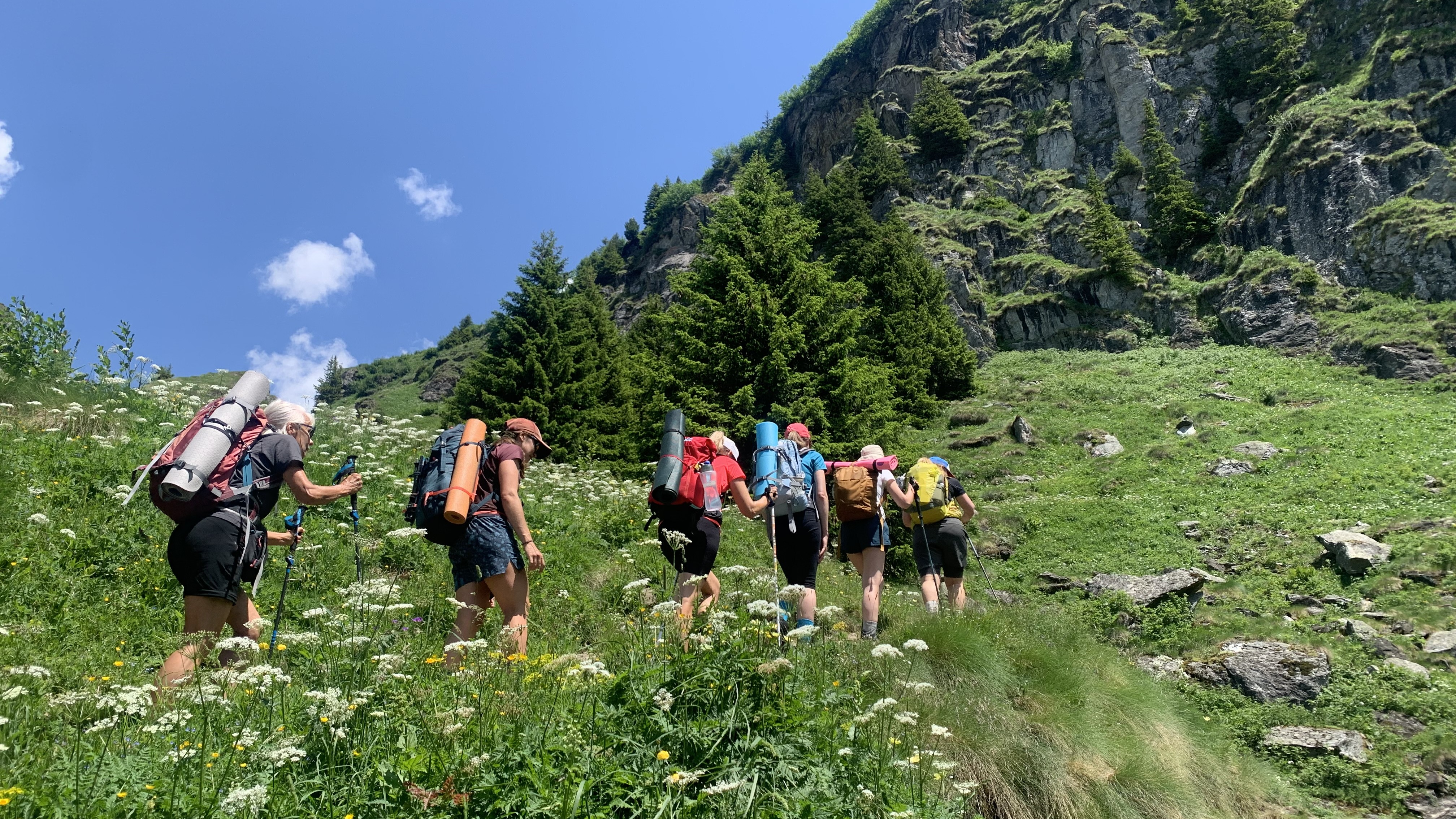
Connection
When we reach our yoga mats, Bertschy several times invites us to sit with eyes closed while facing the Combins Massif across the valley, then open our eyes and really see it.
“Nowhere is more powerful than the mountains, and the contrast here between eyes closed and eyes open,” she says.
Each time I open my eyes, I’m struck by the vividness of the changing colors as the sun sets, then rises, and I notice new details, like the swing bridge across the distant glacier catching the sunlight or an impossibly vertiginous trail that weaves up the side of the mountain.
It’s these moments that should be intrinsic to hiking but can all too easily be lost in rushing or technology and, though I wouldn't recommend hiking with your eyes closed, you can try this exercise any time you stop for a break and revel in a new appreciation of your surroundings.
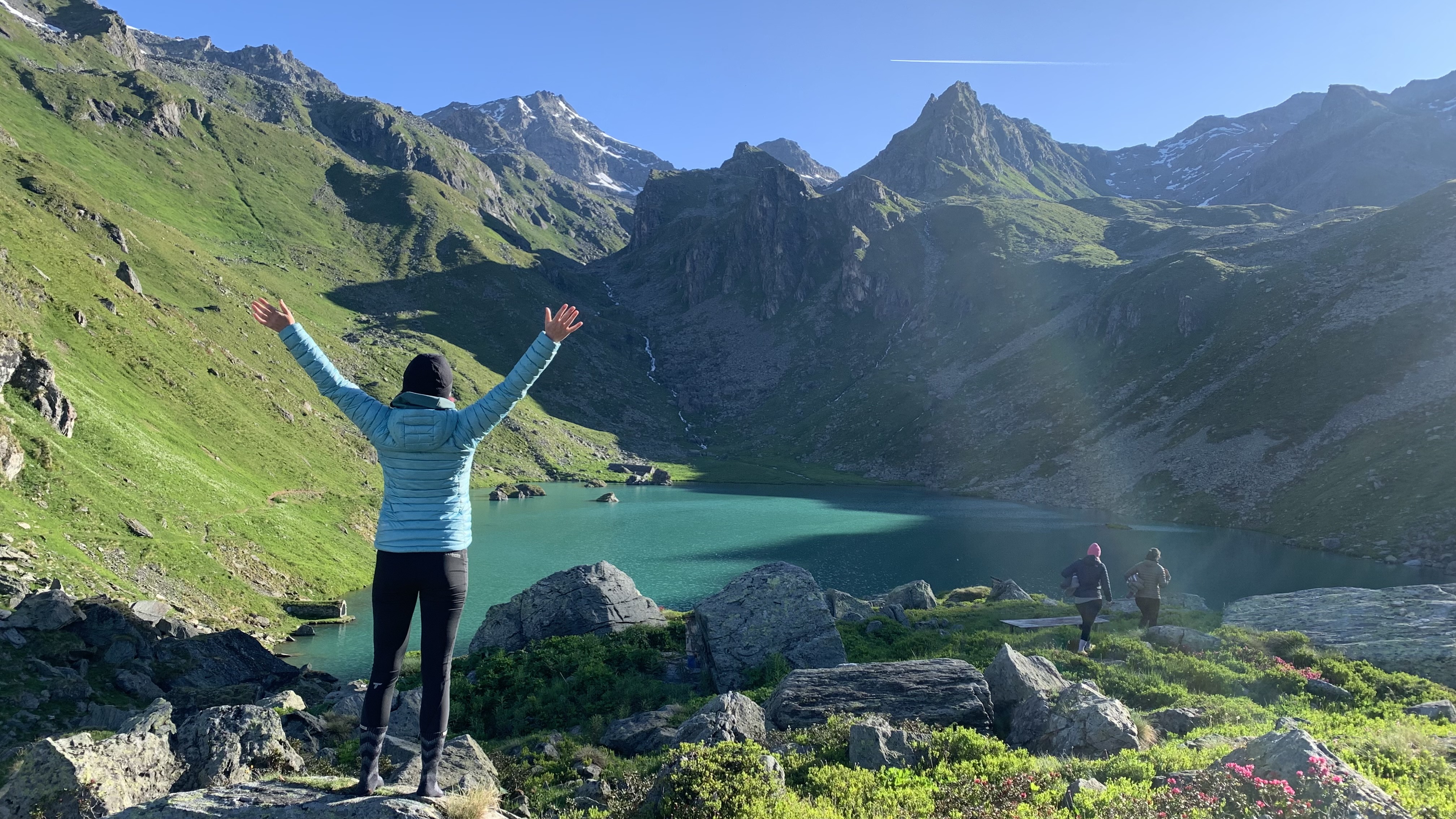
Proprioception
More commonly referred to as 'body awareness', proprioception is your ability to sense your body placement in space. It’s vital for balance and coordination, so it’s important for anyone moving through the mountains who doesn’t want to lose their footing, but it’s best practiced (and improved) on a yoga mat.
I realize this as Bertschy brings us down onto our seats, then invites us to lift our legs, take hold of our big toes, and stretch our legs out wide, effectively balancing on our tailbones. From my precarious spot right at the edge of the deck, any small distraction or gust of wind could be enough to send me over the edge and into the scrub, but with time and effort, I’m able to find a steadiness in both my body and my mind.
We tend to lose proprioception with age, which can be a challenge for those of us who like an outdoor adventure, but it’s a process that can be refined with exercises like those found in yoga. The benefits of what you strengthen on a yoga mat can follow you out onto the trail and help you as you step over ground that moves beneath your feet, a heavy backpack shifting your center of balance.
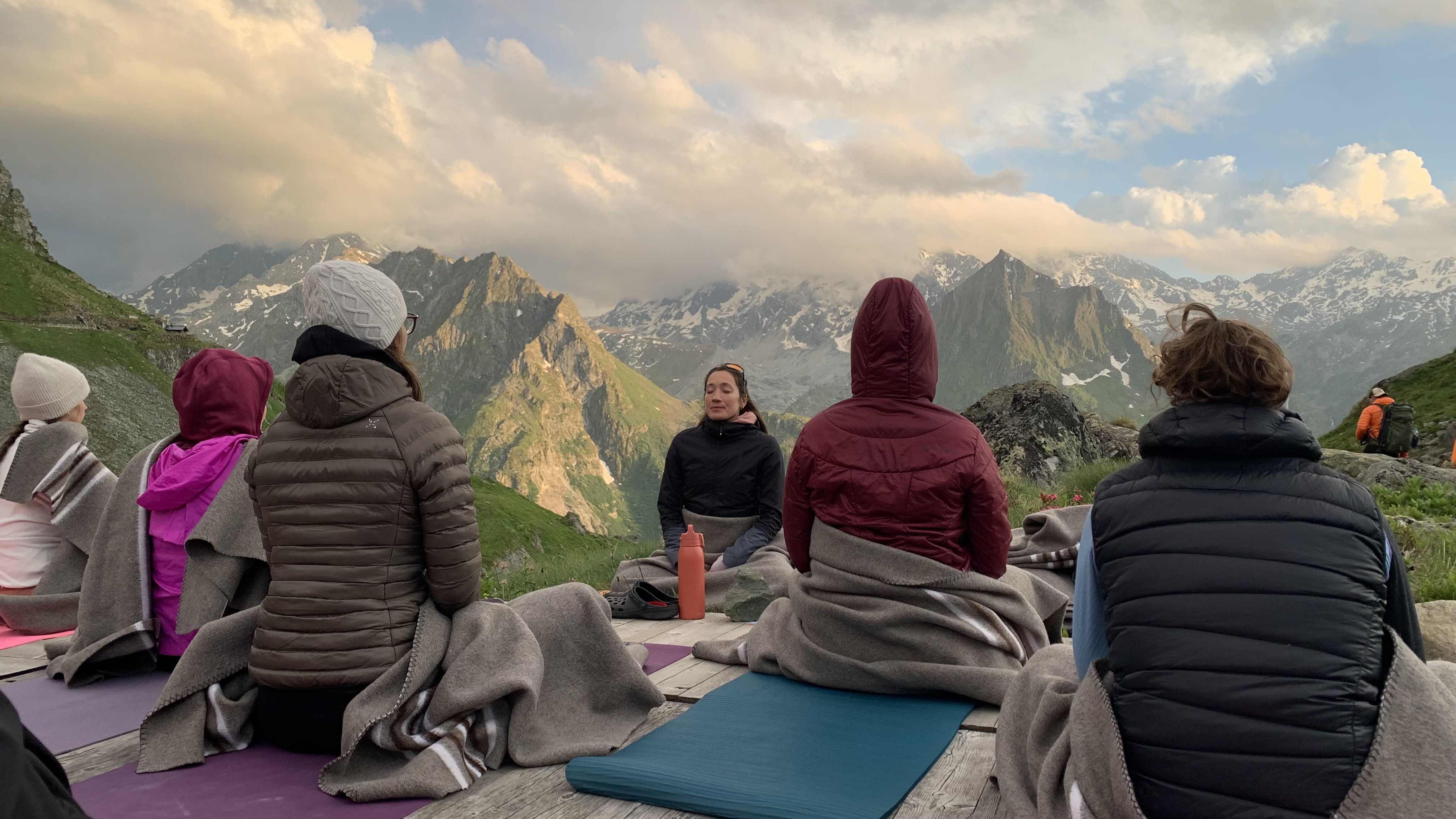
Breath control
Like any cardiovascular activity, hiking impacts your breath by challenging it. Doing it regularly can enhance your cardiovascular fitness, which can improve the length and quality of your life. But if you haven’t trained yourself to breathe deeply before you start hiking, you might find that hunching forward as you climb a steep slope while wearing a bulky backpack actually makes it difficult to breathe. That, in turn, can make activities like hiking feel stressful and more difficult than they need to.
Yoga, on the other hand, can be the perfect place to learn the diaphragmatic 'deep' breathing that’s correlated with improved blood oxygen, lower heart rate and better muscle function. Bertschy cues us to breathe constantly throughout our yoga practices, from sitting quietly in a cross-legged seat and moving our hands apart on an inhale, and together on an exhale, to alternating between two standing poses and linking the actions to our breath.
When we strap our backpacks on and begin our hike out the following day, it feels easier to keep our chests open and breathe deeply, making the climb seem less daunting. When we stop for breaks, I find I can use the time to admire the views rather than catch my breath.
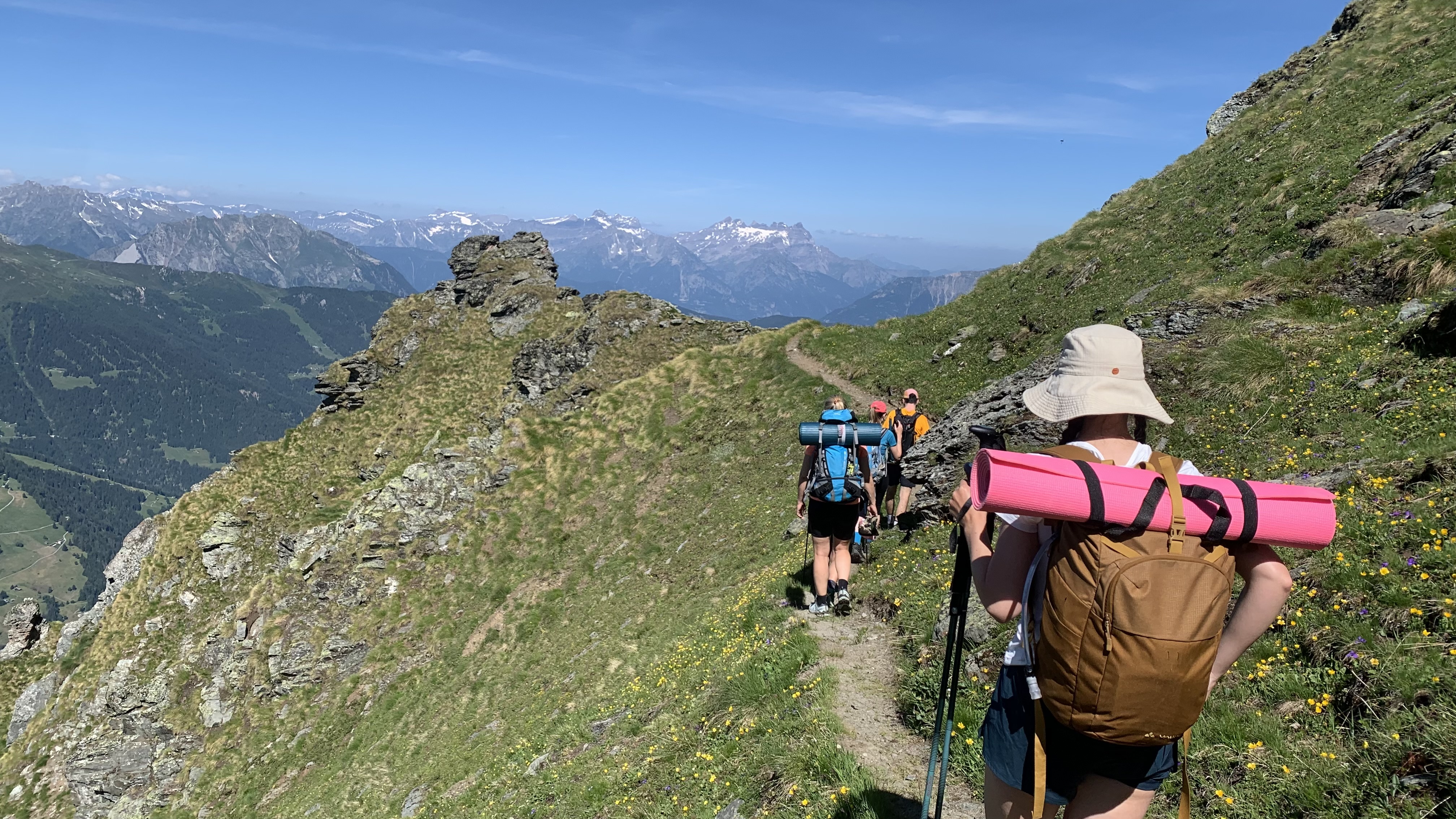
Self-reflection
This particular retreat invites us to connect more fully to our surroundings, but there’s also more quiet time to reflect inwards, something that can be missing if yoga is just a rushed studio class squeezed in on your lunch break or after work.
The schedule allows for time where there’s nothing on the agenda, the yoga practices start and end with quiet contemplation, texts and emails can’t reach us here, and even the hiking is punctuated with breaks.
Bertschy gives us prompts to consider what we’re curious about before setting off and what was most resonant as we conclude the retreat, and these invitations encourage us to reflect on what we learned and what was meaningful. Self-reflection, according to research carried out by Harvard Business Review, can help our critical thinking skills as we figure out what has worked for us, what hasn’t, why, and what we can do differently.
That research is aimed at those seeking to improve their professional performance, but these are skills that can serve us in all of our roles and activities, from the boardroom to mountaintops.
Julia Clarke is a staff writer for Advnture.com and the author of the book Restorative Yoga for Beginners. She loves to explore mountains on foot, bike, skis and belay and then recover on the the yoga mat. Julia graduated with a degree in journalism in 2004 and spent eight years working as a radio presenter in Kansas City, Vermont, Boston and New York City before discovering the joys of the Rocky Mountains. She then detoured west to Colorado and enjoyed 11 years teaching yoga in Vail before returning to her hometown of Glasgow, Scotland in 2020 to focus on family and writing.
